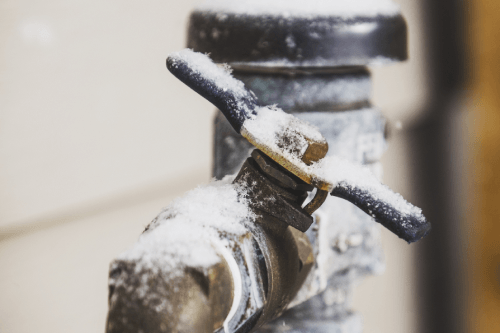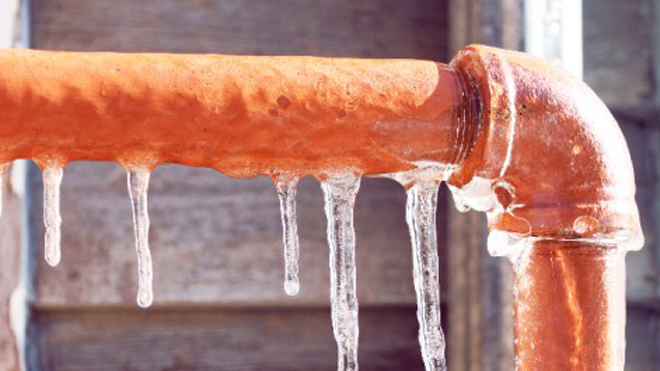Important Advice to Avoid Frozen Pipes in Winter: Specialist Insights
Important Advice to Avoid Frozen Pipes in Winter: Specialist Insights
Blog Article
How do you feel about Winter Plumbing Precautions: Preventing Frozen Pipes?

Cold weather can ruin your pipes, specifically by freezing pipes. Below's how to avoid it from happening and what to do if it does.
Intro
As temperature levels drop, the danger of frozen pipelines rises, potentially leading to expensive repair work and water damages. Comprehending just how to stop frozen pipelines is crucial for property owners in cool climates.
Understanding Frozen Pipes
What creates pipes to ice up?
Pipes freeze when exposed to temperature levels below 32 ° F (0 ° C) for extended durations. As water inside the pipelines freezes, it expands, taxing the pipeline walls and possibly causing them to rupture.
Threats and problems
Frozen pipelines can result in water system interruptions, property damage, and pricey repair work. Burst pipes can flood homes and create comprehensive architectural damages.
Signs of Frozen Pipeline
Recognizing icy pipelines early can avoid them from bursting.
Just how to identify icy pipelines
Search for lowered water flow from faucets, uncommon odors or noises from pipes, and visible frost on exposed pipelines.
Avoidance Tips
Protecting vulnerable pipelines
Cover pipes in insulation sleeves or make use of heat tape to secure them from freezing temperature levels. Concentrate on pipes in unheated or external locations of the home.
Heating methods
Maintain indoor spaces sufficiently warmed, specifically locations with plumbing. Open up closet doors to allow warm air to flow around pipes under sinks.
Shielding Outdoor Pipes
Yard hoses and outside taps
Separate and drain pipes yard hose pipes prior to winter months. Set up frost-proof faucets or cover outdoor faucets with insulated caps.
What to Do If Your Pipelines Freeze
Immediate activities to take
If you suspect frozen pipes, keep taps available to soothe pressure as the ice thaws. Make use of a hairdryer or towels taken in warm water to thaw pipelines gradually.
Long-Term Solutions
Structural adjustments
Consider rerouting pipelines far from exterior wall surfaces or unheated locations. Include added insulation to attics, cellars, and crawl spaces.
Updating insulation
Invest in top quality insulation for pipelines, attic rooms, and walls. Correct insulation assists preserve constant temperature levels and decreases the risk of icy pipelines.
Final thought
Preventing frozen pipelines calls for aggressive steps and fast reactions. By understanding the reasons, signs, and preventive measures, homeowners can shield their plumbing throughout cold weather.
5 Ways to Prevent Frozen Pipes
Drain Outdoor Faucets and Disconnect Hoses
First, close the shut-off valve that controls the flow of water in the pipe to your outdoor faucet. Then, head outside to disconnect and drain your hose and open the outdoor faucet to allow the water to completely drain out of the line. Turn off the faucet when done. Finally, head back to the shut-off valve and drain the remaining water inside the pipe into a bucket or container. Additionally, if you have a home irrigation system, you should consider hiring an expert to clear the system of water each year.
Insulate Pipes
One of the best and most cost-effective methods for preventing frozen water pipes is to wrap your pipes with insulation. This is especially important for areas in your home that aren’t exposed to heat, such as an attic. We suggest using foam sleeves, which can typically be found at your local hardware store.
Keep Heat Running at 65
Your pipes are located inside your walls, and the temperature there is much colder than the rest of the house. To prevent your pipes from freezing, The Insurance Information Institute suggests that you keep your home heated to at least 65 degrees, even when traveling. You may want to invest in smart devices that can keep an eye on the temperature in your home while you’re away.
Leave Water Dripping
Moving water — even a small trickle — can prevent ice from forming inside your pipes. When freezing temps are imminent, start a drip of water from all faucets that serve exposed pipes. Leaving a few faucets running will also help relieve pressure inside the pipes and help prevent a rupture if the water inside freezes.
Open Cupboard Doors
Warm your kitchen and bathroom pipes by opening cupboards and vanities. You should also leave your interior doors ajar to help warm air circulate evenly throughout your home.

I'm certainly very occupied with Prevent Frozen Pipes and I am assuming you appreciated the entire blog entry. If you please take the time to distribute this blog if you enjoyed reading it. Thank you so much for taking the time to read it.
About Report this page